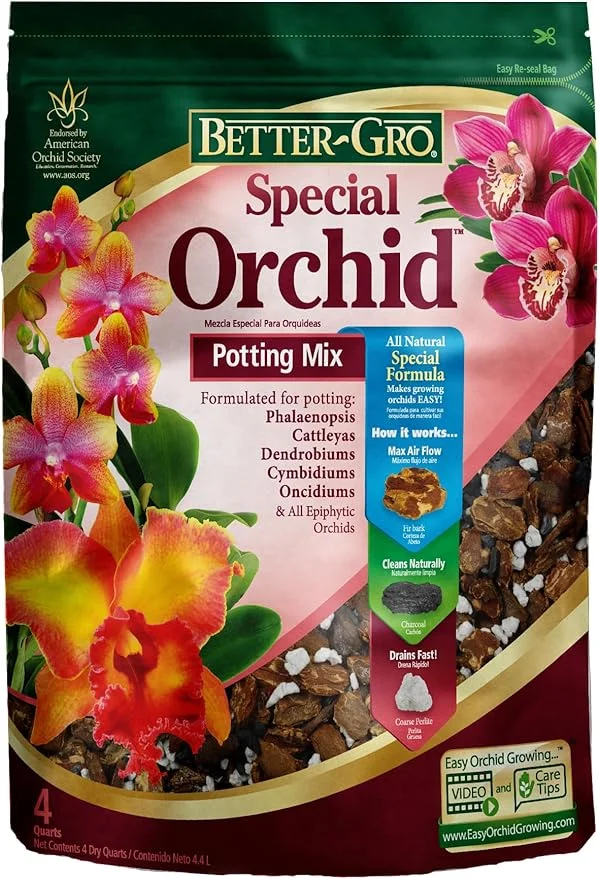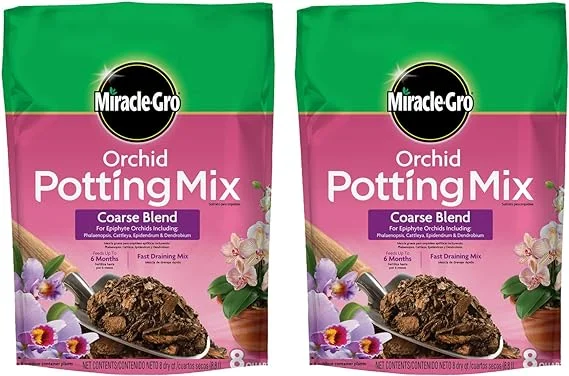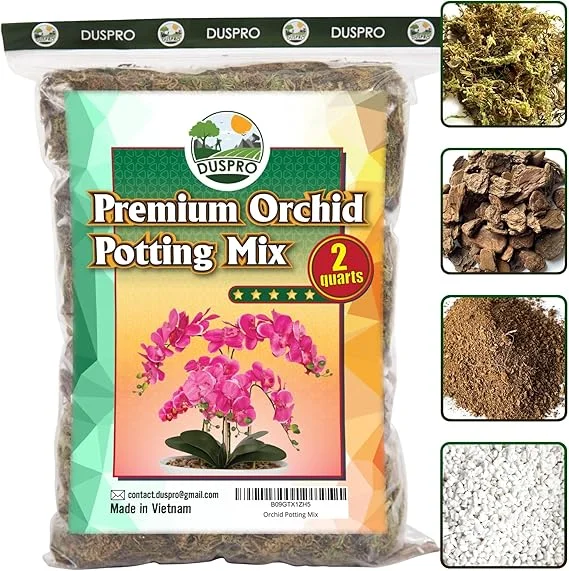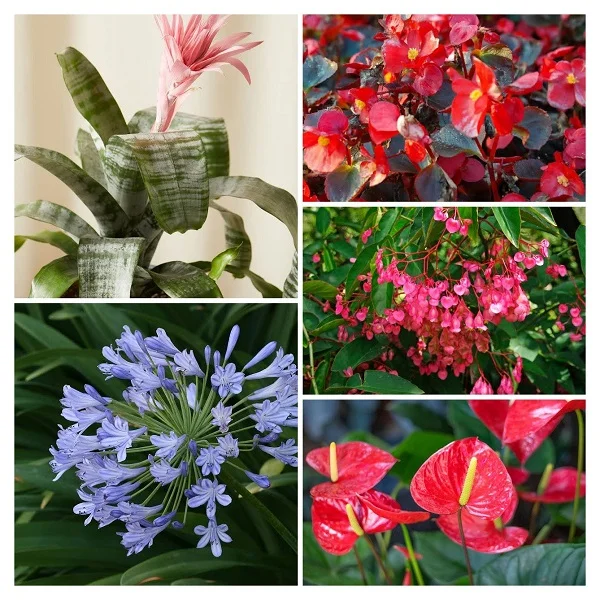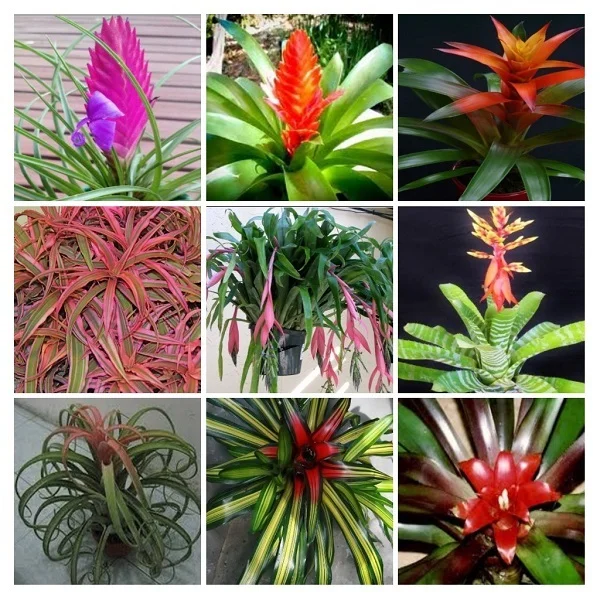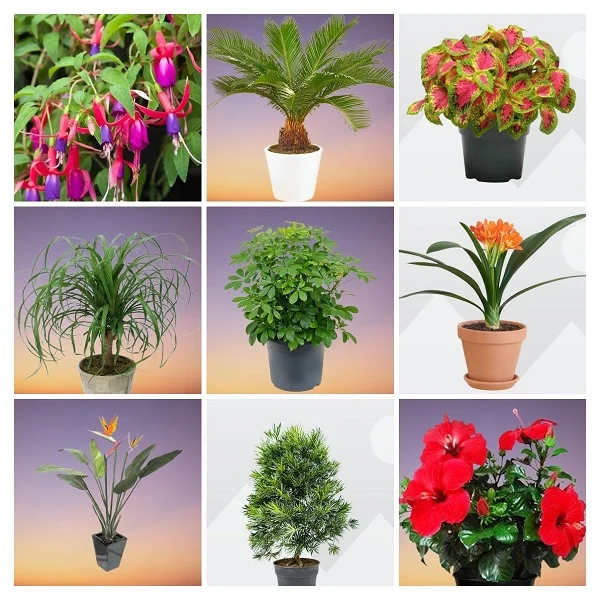How to Grow and Care for Lady Slippers Orchid (Paphiopedilum Orchid) Indoors
Some links in this post may be affiliate links
Lady Slippers Orchids (Paphiopedilum Orchids) bloom in bright to moderate light away from direct sunshine, warm and humid conditions and consistently moist, rich, well-drained, orchid soil coupled with regular feeding in the growing season.
Lady Slippers Orchids also called Venus Slipper Orchids or Slipper Orchids are among the popular Orchids with an unusual and curious form of flowers where the lower lip is pouch-like and looks like a lady's slippers, hence the common name.
The flowers range in color from soft pastels to any combination of rich, earthy tones. Each shoot blooms only once when it is fully grown, bearing a raceme between the the fleshy, succulent leaves. When the older shoots die, newer ones take over.
Venus Slippers Orchids are sympodial orchids which lack pseudobulbs and grow robust shoots, each with several leaves. The leaves can be short and rounded or long and narrow and typically have a mottled pattern. The roots are thick and fleshy. Potted plants will form a tight lump of roots, that can be up to 3 feet long.
The genus name Paphiopedilum was established by Ernst Hugo Heinrich Pfitzer in 1886. It is derived from Paphos (a city in Cyprus) and the Greek word pedilon meaning "slipper" in reference to the pouch-like flower lip. The genus name is abbreviated as paphs. in horticultural journals.
Many hybrids and cultivars of Paphiopedilum orchids have been developed which are easier to grow under artificial conditions than their parent species.
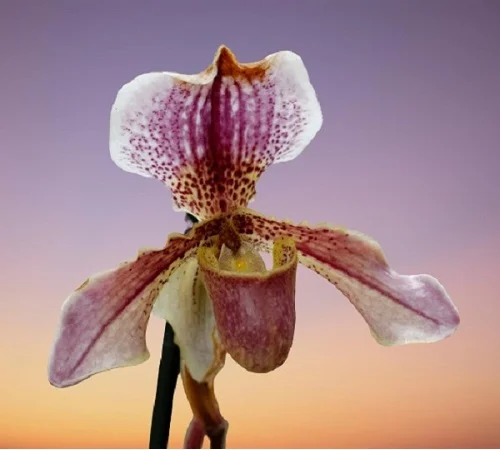
Botanical name: Paphiopedilum
Family: Orchidaceae
Subfamily: Cypripedioideae
Common names: Lady Slippers Orchid, Venus Slipper Orchid, Slipper Orchid
Origin
Paphiopedilum Orchids are native to Southeast Asia, the Indian Subcontinent, southern China, New Guinea and the Solomon and Bismarck Islands. They naturally occur as terrestrials on the forest floor, but a few are epiphytes and some are lithophytes.
Toxicity
Paphiopedilum Orchids are non-toxic to both humans and pets. They are safe to grow in the home and office space.
Where to Buy
Are you looking to add Lady Slippers Orchids to your collection? You may obtain them online from Etsy (Link to Etsy).
Paphiopedilum Orchids Care Indoors
Lady Slippers Orchids (Paphiopedilum Orchids) flourish in bright to moderate indirect light, average warmth of 15-290C, humidity of 60-80% and consistently moist, fertile, well-drained, orchid's potting soil coupled with regular feeding during the growing season.
Paphiopedilum Orchids require regular pruning to keep them neat as well as encourage flowering. Repotting is needed only when they become pot-bound or the soil becomes completely broken down. Keep reading for more on these growing conditions and how to achieve them.
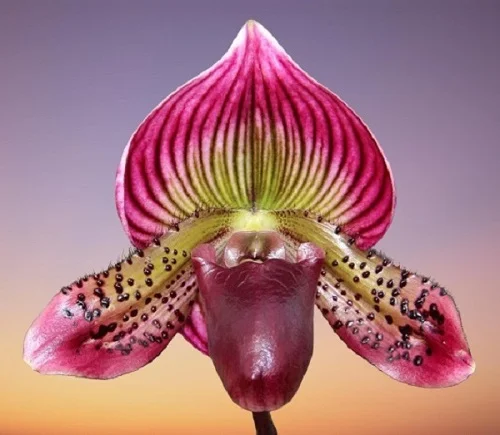
Light Requirements
Lady Slippers Orchid grows best in bright to moderate indirect light. Keep it away from direct sunshine to avoid sun scorch on the leaves.
A Paphiopedilum Orchid that is receiving the right amount of light has light-green leaves. Dark green leaves indicate that the orchid needs more light. Yellowish leaves means that the orchid is receiving too much light.
The orchid can be grown under a grow light if the natural lighting is not sufficient. Check out these full spectrum grow lights on Amazon.
Regularly turn the pot to ensure that the orchid gets adequate light on all sides for uniform growth and prevent lop-sided growth.
Watering
Water Lady Slippers Orchid thoroughly during the growing season while allowing the top 1-2 inches of soil to dry out between watering and maintain the soil consistently moist.
Lessen watering during the cold season as growth is minimal at this time to keep the soil slightly moist but do not allow it to dry out completely. Drooping or wrinkly leaves indicate that you are underwatering the orchid.
Lady Slippers Orchid is sensitive to chlorine and other chemicals dissolved in water, therefore, water with chlorine-free water like rain water.
Use water that is at room temperature to avoid shocking this tropical plant as it can lead to reduced growth. Avoid wetting the foliage as it can lead to fungal diseases; you may water from the bottom.
Paphiopedilum Orchids unlike Cattleya (Corsage) Orchids are less tolerant to dry soil due to the absence of pseudobulbs. Therefore, take care not to overwater it.
Temperature and Humidity
The best temperatures for Lady Slippers Orchid are between 15-290C. Warmer days and cooler night temperatures with a difference of 10-150C are ideal for this orchid. The cool nights are essential to trigger flowering.
Keep it away from drafts to avoid sudden changes in temperature as they can cause leaf drop and reduced growth. Make sure that there is good air circulation as the orchid cannot tolerate hot and stuffy conditions.
Lady Slippers Orchid requires a humidity of 60-80% to thrive. Set the pot on a wet pebble tray or use a cool mist humidifier to raise humidity. Learn more on how to increase humidity for houseplants.
Do not mist the orchid as it can lead to fungal diseases. Occasionally clean the leaves by damp-wiping with a soft cloth to get rid of dust and also discourage pest and disease infestations.
Fertilizer
Feed Lady Slippers Orchid during the growing season with an orchid's fertilizer as per the manufacturer's instructions. Withhold feeding in the cold season as growth is minimal at this time. Do not feed an orchid that is in flower as it can shorten the flowering period.
It is better to err on the side of underfeeding than overfeeding the orchid as overfeeding may result in loss of roots and thus death of the orchid. If you overfeed the orchid, it can also lead to vegetative growth at the expense of flower production.
Potting Mix
Pot Paphiopedilum Orchid in loose, well-drained, bark potting mix as soggy soil can result in root-rot and death of the orchid. Most orchid's potting mixes are ideal for this plant as they drain easily which prevent the soil from getting soggy.
Repotting
Repot Lady Slippers Orchid only when growth begins to suffer. Repot when the orchid has outgrown its pot and the new growth reaches out over the edge of the pot or when the soil has broken down completely. Basically repotting the orchid every 2 years should be adequate. Repot only when new growth begins, shortly after blooming is over.
Use a pot with proper drainage holes or slits as the roots of the orchid need good air circulation. The pot should be only 1 size larger than the current one and large enough to accomodate the roots. Take a look at these orchid pots with a free slotted orchid pot liner on Amazon.
Do not repot an orchid that is in flower as it may shorten the flowering season due to repotting shock. While repotting the orchid, shake off excess soil and trim off any dried and shrivelled roots.
Pruning
Pruning Lady Slippers Orchid is easy. Remove dead and diseased leaves by cutting them at the base with sharp scissors or a knife. When flowering is over, cut the flower stalk 1 inch above the 3rd node from the bottom to encourage more flowering.
Propagation
Lady Slippers Orchid (Paphiopedilum Orchid) propagation can be done at the beginning of the growing season once flowering is over by division or from keikis.
How to propagate Lady Slippers Orchid by division
Gently split the Lady Slippers Orchid into sections while ensuring there are at least 3 shoots on each section.
Seperate the roots attached to each division from the mother root-ball.
Remove the old potting soil attached to the section's roots and place each section in the center of the pot.
Bury the roots of the section in the soil while ensuring that it is at the same level as it was.
The best pot for the section should be large enough to accomodate the roots.
Ensure the pot has enough drainage holes and slits to prevent root-rot in the section.
Place the set up in a warm, well-lit place until sections have established their own roots.
Do not water the newly propagated Orchid for about 7 days to allow time for the healing of injured roots.
After the 7 days of dryness, water the new Venus Slippers Orchids lightly to enhance root development. Stake each newly repotted plant.
How to propagate Lady Slippers Orchid from keikis
Lady Slippers Orchids naturally produce "baby" orchids called "keiki" which normally appear on an old or new flower spike. Keikis are identical copies of the parent plant.
Keiki growth can be triggered by prolonged exposure to high temperature during the final phase of spike growth.
The keiki can be detached from the mother when about one year old when it has developed 2-3 leaves and 1-3 inches long roots.
Pot the keiki in fresh potting medium and direct the roots downwards and provide support for the keiki.
Place the set up in a well-lit place away from direct sunlight and mist the keiki regularly to maintain a humid enviroment.
Allow the new Venus Slippers Orchid to be well established before transplanting it after which routine care can begin.
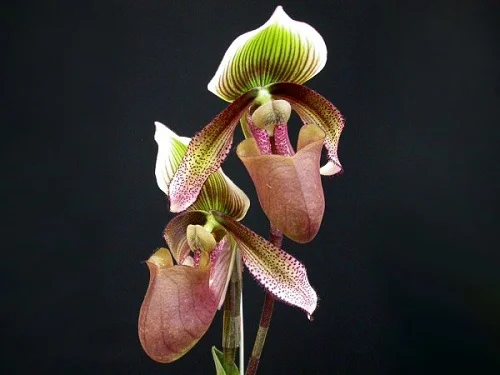
Paphiopedilum Orchid Problems
Lady Slippers Orchids (Paphiopedilum Orchids) problems include black leaf tips, lack of blooms, mold, drooping leaves, leaf spots, discolored leaves, pests and diseases among others. Keep reading for more on these problems, their remedies and solutions.
Pests
Common pests in Lady Slippers Orchid are mealy bugs, scale insects, slugs and snails. Isolate the affected orchid to prevent spread to other plants and treat it with neem oil or insecticidal soap. Ensure to follow the manufacturer's recommendations on the label.
No blooms
Lady Slippers Orchid is not blooming (flowering) due to two possible reasons. One possible reason is too little light. Move the orchid to a brighter spot and ensure it is receiving moderate to bright light away from direct sunshine. You may also instal grow lights where the natural lighting is not enough. Check out this guide on understanding light for houseplants.
The second possible reason why Paphiopedilum Orchid is not blooming (flowering) is overfeeding which results in vegetative growth at the expense of flowers production. Feed the orchid during the growing season with an orchid's fertilizer as per the manufacturer's instructions to avoid overfeeding. Do not feed in the cold season as growth is reduced at this time. Learn how to feed houseplants.
Mold on the leaves
Mold on Lady Slippers Orchid leaves is an indication of powdery mildew which is promoted by overwet conditions coupled with poor air circulation. Misting the orchid may lead to mildew growth if the water does not evaporate quickly. Ensure that there is good air circulation for the orchid and stop misting it.
Dark-green leaves
Lady Slippers Orchid dark-green leaves indicate that the orchid is not getting enough light. The leaves of a Venus Slippers Orchid that is receiving the correct light should be light-green. Move the orchid to a brighter spot where it will receive bright to moderate light away from direct sunlight or instal grow lights if the natural lighting is not adequate.
Yellowish leaves
Lady Slippers Orchid yellowish leaves indicate that the orchid is getting too much light. The leaves of a Paphiopedilum Orchid that is receiving bright to moderate light should be light-green. Move the orchid to a shadier spot away from direct sunlight.
Limp and drooping leaves
Lady Slippers Orchid limp and drooping leaves are caused by underwatering. Do not allow the soil to dry out completely.
Water the orchid thoroughly during the growing season and allow the soil to dry out slightly to maintain the soil consistently moist through out. Cut down on watering in the cold season to keep the soil slightly moist but do not allow the soil to dry out completely.
Black leaf tips and dying
Lady Slippers Orchid black leaf tips and dying is due to the presence of chemicals like chlorine and flourides in the water or accumulation of salts in the soil. Use chlorine-free water only to water the orchid. Flush out accumulated salts from the soil regularly by running a stream of water through the soil for about 10 minutes until it comes out through the drainage holes.
Brown soft leaf spots
Lady Slippers Orchid brown soft leaf spots are an indication of a fungal disease. Remove the affected leaves immediately to prevent further spread.
Brown hard and dry leaf spots
Lady Slippers Orchid brown hard and dry leaf spots are sunscorch marks due to exposure to hot direct sunshine. Move the orchid to a shadier spot or protect it from hot direct sunshine to avoid sunscorch.
You liked it? Share on social media.
Related Content
Amazon Associates Disclosure
Homeplantsguide.com is a participant in the Amazon Services LLC Associates Program, an affiliate advertising program designed to provide a means for sites to earn advertising fees by advertising and linking to amazon.com.
